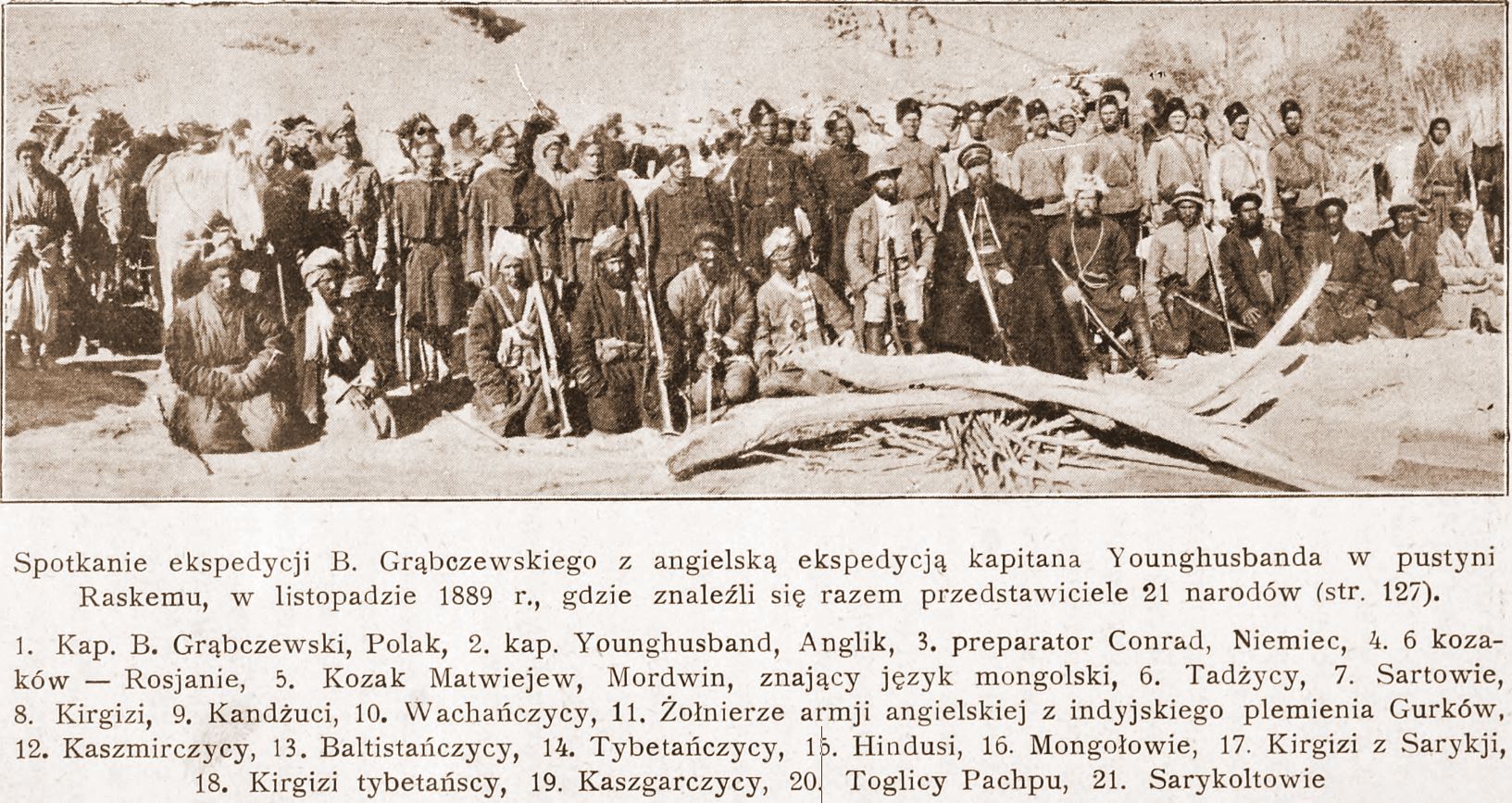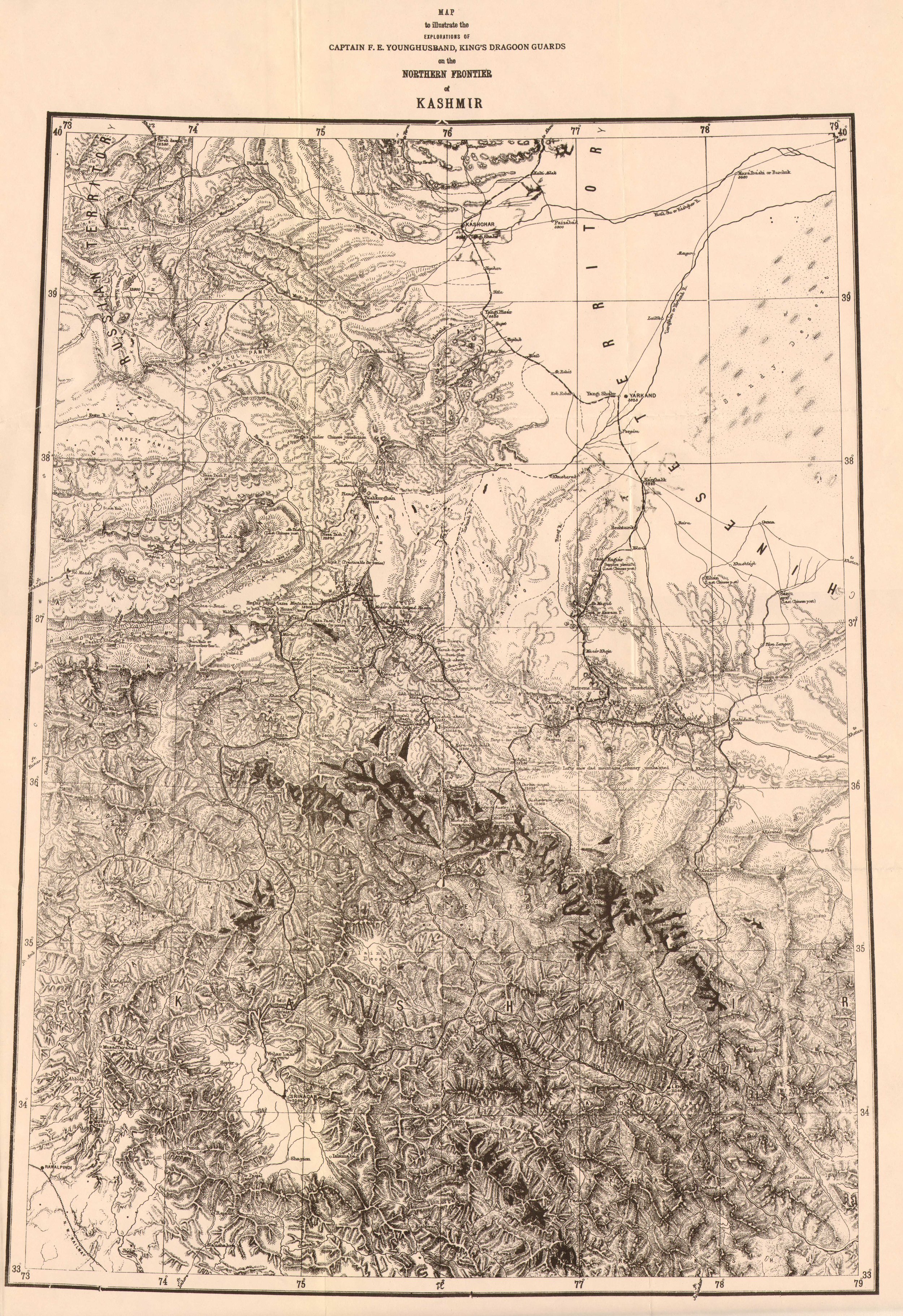When the Two Great Gamers Met in High Asia
The Great Game was game of intrigue and one upmanship played between the two Greatest Empires of that time, the British Empire and the Tsarist Russian Empire that was played in the most of the Nineteenth Century. At stake for the British was the Jewel in the Crown, the Indian sub-continent while for the Tsarist Russia it was their Empire in Central Asia. Both these Empires met somewhere in high Asia in the midst of the Mountains of the Great Himalayan System.
The British had constant nightmares of Cossacks riding over the great Mountains and making a dent in their Indian holdings. The fact that Tsarist Russia overran most of Central Asia during this time and that a body of Cossacks now sat on top of the Wakhan not very far from the Kashmir territories did not make things comfortable for them either. The Great Game was played in a region stretching from Persia to Afghanistan over to India and Tibet and the whole of Central Asia.
Sir Francis Younghusband
There have been many Western Explorers who went on different assignments in these Mountains but one of the key reasons was always to find out more about the Politics and the Geography of the regions which were not under the Control of the Empire. The frontiers of the Punjab Empire of Maharaja Ranjit Singh were a key target as they bordered the wilds of Afghanistan as it slowly gave way to Central Asia. Also of great interest to them were the Routes that were traditionally taken from Kashmir via Ladakh into Central Asia. The Cossacks had a reputation and the British wanted to have the information on all the possible Routes that the Cossacks would take in case they decided to lay their claim on the Jewel in the Crown.
Younghusband's Route from Peking to Kashmir over the Mustagh Pass
One of the great players of the Great Game from the English side was the well know Gentleman, Sir Lt. Col. Francis Edward Younghusband. He was born at Murree and joined the Military in the footsteps of his father and elder brother. His first achievement was to make a Journey through Manchuria and China mainland and onto the Takla Makan into the Tarim Basin and from there onto the fabled Central Asian Khanate cities of Kashgar and Yarkand and from there over the Pamirs and the Karakorams over the Mustagh Pass into Kashmir and finally into British territory. He led several other expeditions into the Mountains and he led the British invasion of Tibet in 1903. He has been widely accepted as a great Explorer and Soldier. More on him and his Expeditions in a later Post.
On the Tsarist Russian side also there was no dearth of Men who were no less. One of the most accomplished players from their side was Bronislav Grombchevsky, an Officer in the Russian Imperial Army of ethnic Polish descent. He led many expeditions into Kashgaria as the region of the Tarim Basin in the late 1800s. This Region was of great interest to the three Empires which met in the vicinity, the third one being the Chinese Empire. The region of Kashkagia was a Khanate ruled by the insolent Ulugh Beg, who tried to balance the influences of all these three Great powers in his own tyrannical way. Among his missions were an expedition along the Gilgit River with his Cossacks which led to alarm bells ringing in the British Empire and were one of the reasons for the Hunza Chitral missions of the British Army to subjugate the errant local Rulers and which eventually ended in Gilgit being taken on lease from Maharaja of Jammu and Kashmir and the creation of Gilgit Agency.
One of the most interesting Event that took place between these two contemporary Giants of the Great Game took place in 1889. Captain Younghusband, as he was at that time was despatched with a small detachment of Gurkha soldiers to explore unknown regions of Northern Ladakh where the trade between Ladakh and Yarkand had been disrupted by Hunzai raiders. While on this mission Capt.Younghusband’s detachment was camping somewhere along the wilds of the Yarkand River. As it so happened Grombchevsky and his detachment of Cossacks were Camping somewhere in the vicinity as well. Two great European officers of competing Empires (the largest in the World at that time and the most powerful as well) were camped close to each other in High Asia, an unknown Mountainous wilderness where India met Central Asia. Of course they had to meet as these Officers were also Gentlemen.
Bronislav Grombchevsky
Bronislav Grombchevsky sent an invitation to Capt. Younghusband to come over to his Camp for dinner. Capt. Younghusband accepted the offer. So the Capt with his Gurkha escort went over to meet his Russian counterpart. It is said they sat late into the night having a Gentlemanly discussion on the current situation and the Great Game intrigues. Apparently over copious amounts of Vodka served by the Russians Capt.Younghusband candidly asked Grombchevsky about any Russian plan to invade India through these mountains. Not really sure what Grombchevsky had to say on this but he made a point by telling his Cossacks to put on a display of their legendary Horsemanship in front of the British Captain who is said to have been suitably impressed. After the Cossacks were through with their performance Captain Younghusband told his Gurkhas to put on a Rifle drill for his Russian hosts. The Drill along with the Gurkhas brandishing their Khukris to the cry of “Jai Maha Kali, Ayo Gorkhali” are said to have impressed Grombchevsky even more as it was quite unlike anything he and the Cossacks had ever seen before. The Captain made his point and he made it well.
The Northern Frontier of Kashmir by Francis Younghusband 1880
The night over both parties parted, Capt Younghusband carried on with his explorations in the Karakorams while Grombchevsky continued on his way towards Tibet.
The Russian invasion of India through High Asia over the Mountains never happened and the Great Game became a fascinating chapter in History.
Of that famous meeting between the two European Officers in High Asia with their Cossacks and Gurkhas still exists and I m posting that here. Interestingly the pic is from Russian sources and besides the Officers and Soldiers from each side it mentions the ethnicity of the people who were a part of the respective retinues are mentioned. We find Tajiks, Sartowie (?), Kirghiz, Kunduzi, Wakhani, Kashmiri, Baltistani, Tibetan, Hindu (Indian ?), Mongol, Saraiki, Kirghiz Tibetan, Kashgari, Togily Pachpu (?) and Saraikoli mentioned.
In the pic we see Capt Younghusband in the center left wearing a hat with his Gurkhas behind and other members of his party on his left. On the right is Grombchevsky with his Cossacks behind him and other staff on the right sitting on the Ground.
Pic from November 1889. Somewhere in the Raksam Valley on the Yarkand River.





